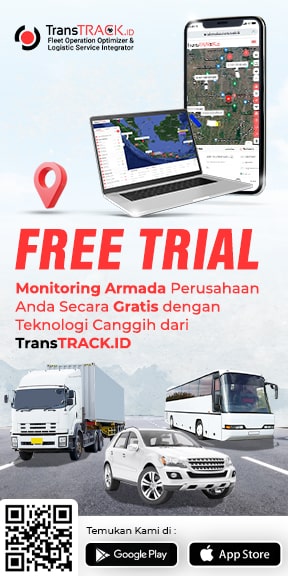Key Components and Benefits of SOP Freight Forwarding Implementation
Posted on July 5, 2024 by Nur Wachda Mihmidati

In an increasingly fast-paced and complex business world, efficient delivery of goods is a key factor in achieving customer satisfaction. When customers expect their goods to arrive on time and in good condition, companies need to have an organized system to manage every aspect of the delivery. This is where the Standard Operating Procedure (SOP) for Freight Forwarding plays an important role. With clear and structured SOPs, companies can ensure that each step in the shipping process is executed consistently, reducing the risk of errors and improving operational effectiveness. In this TransTRACK article, we will discuss the importance of a Freight Forwarding SOP, its key components, and how to ensure compliance with these procedures to achieve optimal results.
What is a Freight Forwarding Standard Operating Procedure (SOP)?
The Standard Operating Procedure (SOP) for Freight Forwarding is a document that contains the steps and procedures that must be followed in the process of shipping goods. This SOP aims to ensure that shipments are carried out efficiently, safely, and in accordance with applicable regulations.
Benefits of Freight Forwarding SOP
The following is an explanation of the benefits of the Goods Shipment SOP:
Increase Operational Efficiency
With SOPs in place, every step in the delivery process can be carried out in a consistent and structured manner, so that time and resources can be optimally utilized.
Reduces Risk of Errors
SOPs provide clear guidance for employees, reducing the chance of errors in packing, shipping, or documentation.
Increase Customer Satisfaction
On-time delivery and meeting customer expectations can improve their experience, leading to loyalty and recommendations.
Regulatory Compliance
SOPs ensure that all delivery processes comply with applicable regulations and policies, reducing legal risks and fines.
By implementing SOPs, companies can achieve operational goals and improve overall service quality.
Key Components in the Goods Forwarding SOP
The following is an explanation of the main components of the Goods Forwarding SOP:
Receiving and Inspection of Goods
The initial process where the goods to be shipped are received and inspected to ensure that all items match the order and are in good condition.
Goods Packaging
Steps to safely package goods to avoid damage during shipment. This includes proper selection of packaging materials.
Labeling and Documentation
The process of labeling packages and preparing necessary documents, such as invoices, bills of lading, and other shipping documents to ensure clarity and order.
Shipping Process
Determines the delivery method used (e.g., vehicle, courier), delivery schedule, and monitoring of delivery status.
Receipt by the Receiver
Procedures to be followed by the receiver when the goods arrive, including inspection of the condition of the goods and signing of the receiving documents.
By following these components, companies can ensure that the freight forwarding process runs smoothly and efficiently.
How to Ensure Compliance with the Freight Forwarding SOP?
To ensure compliance with the Freight Forwarding SOP, you can take the following steps:
Employee Training
Thorough training is key to ensuring employees understand and are able to properly implement the Freight Forwarding SOP. This can be done through regular workshops and seminars that explain shipping procedures and the importance of following the SOP. In addition, practical simulations can be conducted to give employees hands-on experience in real situations, so that they are better prepared to face challenges that may arise in the shipping process. With good training, employees will feel more confident and competent in carrying out their duties.
Clear Documentation
SOP documentation should be designed to be easily accessible and understood by all employees. All procedures and steps should be recorded in detail in the document, including an explanation of the responsibilities of each position in the delivery process. By having clear and detailed documentation, employees can refer to the SOP at any time to ensure that they are following the correct procedure, thereby reducing the possibility of errors and improving consistency in operations.
Audit and Monitoring
Conducting periodic audits is an important step to ensure compliance with SOPs. These audits help companies to evaluate whether employees are following established procedures and document any deviations that occur. In addition, the audit can also identify areas that need improvement, both in the implementation of the SOP itself and in the overall delivery process. With the audit results, companies can make the necessary adjustments to improve operational efficiency and effectiveness.
Feedback and Improvement
Encouraging a culture of feedback within the company can create a better environment for continuous improvement. By encouraging employees to provide feedback on SOPs, they will feel more involved and responsible for the processes they run. In addition, companies need to devise mechanisms that allow for the collection and analysis of such feedback. The results can be used to update and improve the SOPs, ensuring that the procedures remain relevant and in line with the team’s needs.
Use of Technology
Implementing technology in the shipping process can improve efficiency and compliance with SOPs. Using a software-based delivery management system allows companies to track goods, monitor delivery status, and manage documentation automatically. With real-time tracking, employees and customers can monitor the location of goods during the shipping process, reducing uncertainty and increasing transparency. Technology can also help in identifying issues faster, so that action can be taken earlier.
Discipline Enforcement
Setting consequences for employees who do not comply with SOPs is important to encourage responsibility. By explaining that non-compliance can lead to problems for both the company and customers, employees will be more aware of the importance of following procedures. In addition, companies can also reward employees who consistently comply with SOPs, such as recognition or incentives. This will create a positive culture of compliance within the team.
Periodic Evaluation and Revision
SOPs need to be evaluated and revised regularly to ensure that procedures are always relevant and effective. By conducting this evaluation, the company can adjust the SOP to changes that occur in the industry, regulations, or technology. In addition, audit results and feedback from employees should be taken into consideration in the revision of SOPs. Thus, SOPs can be continuously improved to face new challenges and maintain high operational standards in freight forwarding.
In an increasingly competitive business world, having an effective Standard Operating Procedure (SOP) for Freight Forwarding is key to improving efficiency, reducing the risk of errors, and increasing customer satisfaction. By implementing clear and structured SOPs, your company can ensure that every shipment is done well, complies with regulations, and meets customer expectations.
To support better implementation of SOPs, consider using the Transportation Management System (TMS) from TransTRACK. With the advanced technology offered by TransTRACK, you can monitor shipments in real-time, manage documentation efficiently, and improve communication between all relevant parties. Gain a competitive advantage in the market and optimize your freight forwarding process today!
Contact us now for more information on how TransTRACK can help your business.
Topic :
 Bahasa Indonesia
Bahasa Indonesia








